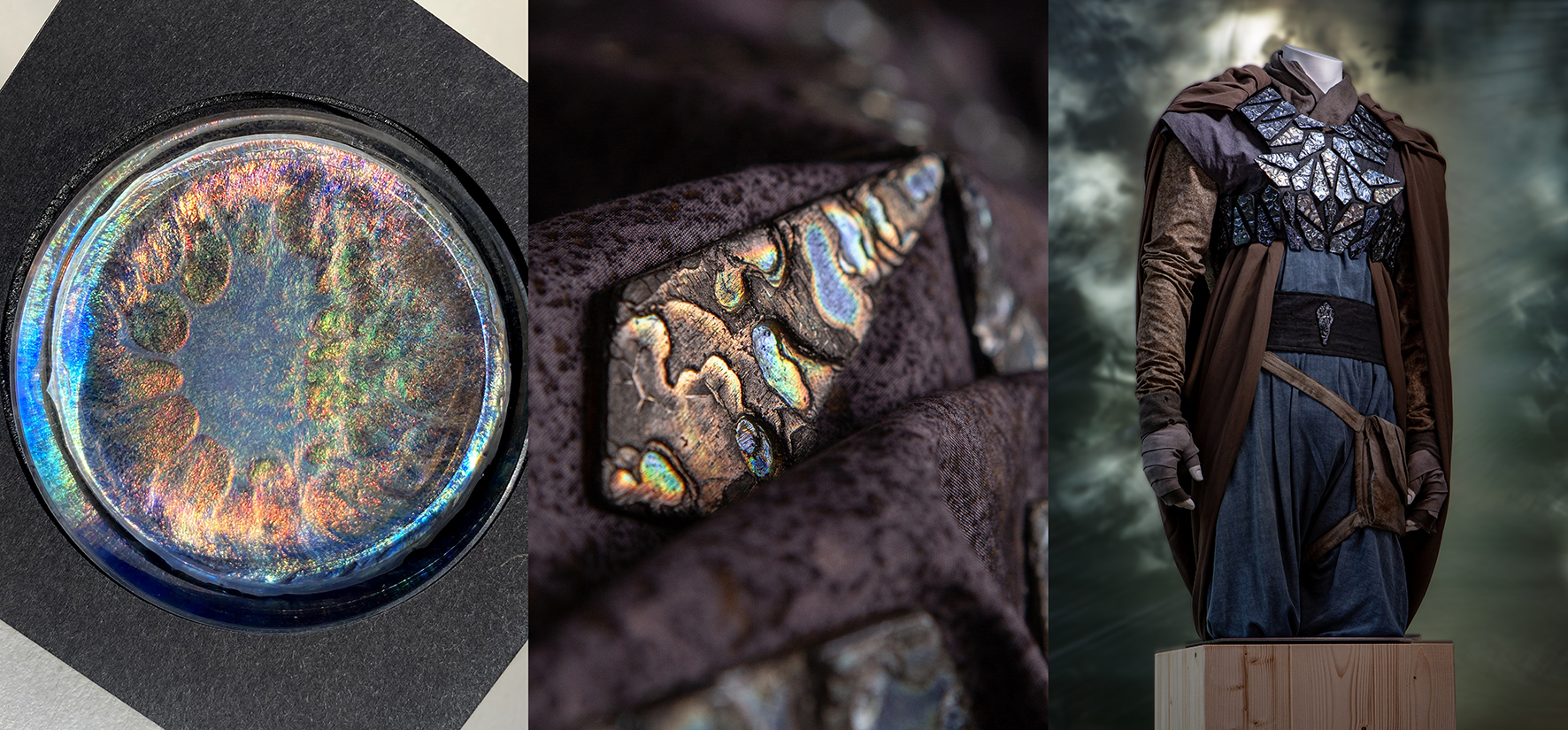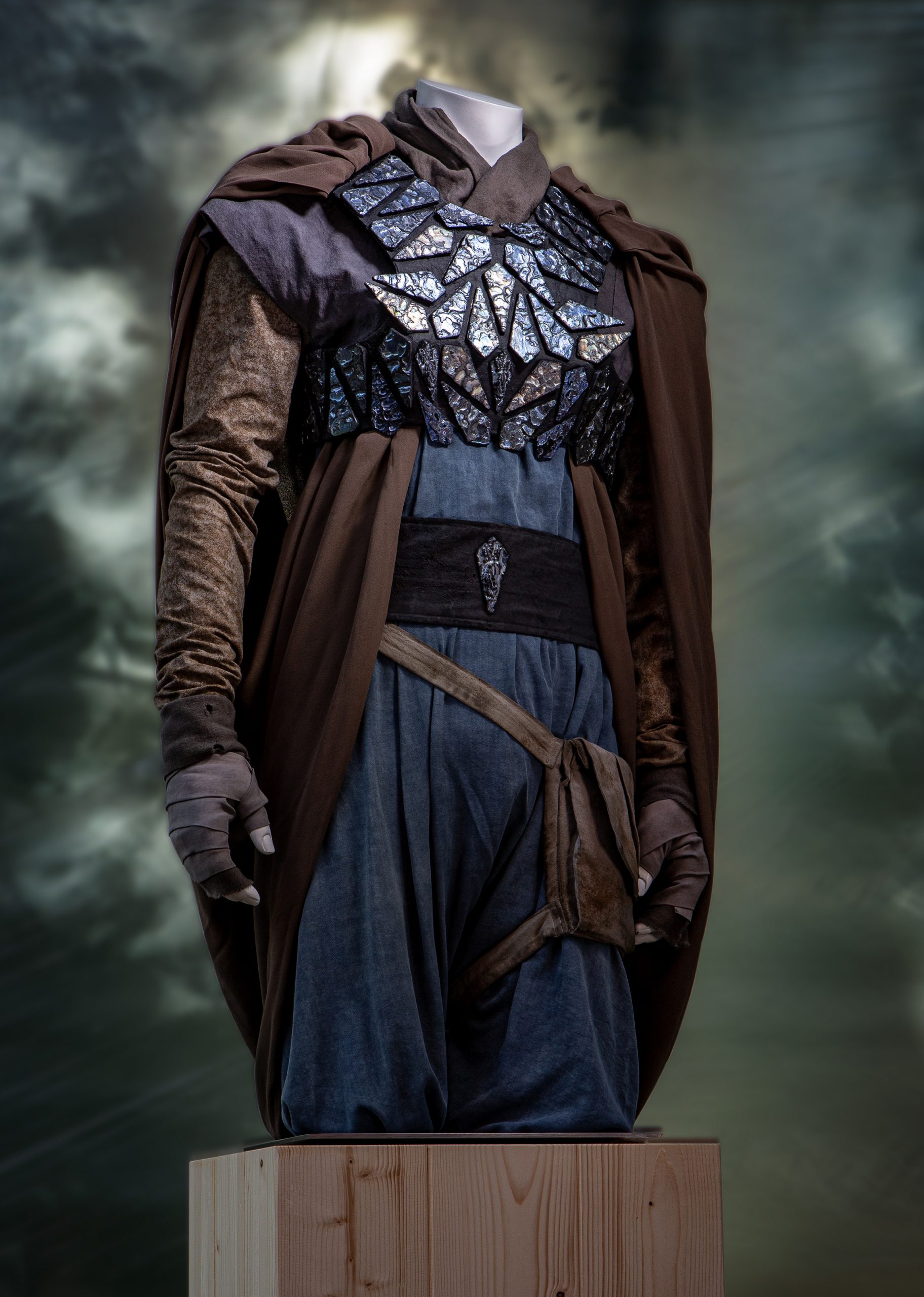Naturally Dramatic

Useful information
- Team members
- Urs Dierker
- Country
- Finland
- Keywords
- plant-based costume design sustainable biomaterials cellulose
Short Description
The Naturally Dramatic project combines science and art to create sustainable textile designs.
Detailed Description
Sustainable Textile and Material Design for Stage and Film costumes
I have worked together with Aalto University experts in chemical engineering, looking at wood-based cellulose, fungi and bacteria to find chemical-free, non-toxic ways of treating materials used in costumes. Cellulose, one of the most abundant biomaterials on Earth and easily derived from wood, shows exceptional promise. I designed a costume using cellulose-based textiles and wood-derived pigment-free coating to create shiny, iridescent effects – purely from wood. The shimmering wood coating reflects light to create color without any kind of dye or chemical treatment. Hand-in-hand with Aalto researchers, I have also found possibilities for costume design in some less-than-obvious friends from nature. We have been experimenting with using bacteria and mycelia – a sort of mushroom in-growth – to color materials without harsh chemicals. We’ve made some gorgeous, fade-resistant violet-blue in just a couple days!
Project Details
- Does your design take social and cultural challenges and human wellbeing into consideration?
Yes, Wonder Woman's (Superman's) next cape will be green! We are working on sustainable textile designs for anyone to use in Bollywood, Hollywood and beyond. We are interested in making film work safer by reducing the current dependence on toxic materials in costume production.
- Does your design support sustainable production, embodying circular or regenerative design practices?
Circularity in the case of costume design refers to the development of frameworks in the triangle of environmental, economic and social practices of a film or stage production. Circular processes enable costume departments to design out waste and pollution in the making and use of costumes, and to keep existing costumes and materials in use by adding new value to reuse and sharing (Ellen MacArthur, 2021). Circular processes increase transparency and interconnectedness through the production chain of costumes between different departments (Matthes A. et al., 2021).
In our case, we are using bio- and bio-based materials to replace synthetic dyes and materials and thereby reduce toxicity throughout a costume’s lifecycle. We are also combining new technologies like 3-d printing and traditional craft practices to custom create only what is needed and thereby reduce waste. Finally, we are looking at how this all fits within workflows and the broader ecosystem of film productions to see how costume design and making can take a more holistic approach to sustainability.
- Does your design use principles of distribution and open source?
We are a collaboration between a textile artist and material researcher at Aalto University, and we would like to share our research with everyone. Right now, we are talking with film and television productions to see how we can bring them in to the research and development process early enough that we can make sure these new materials will work for them. Have a look at www.skitterwaterrepellents.com
- Does your design promote awareness of responsible design and consumption?
Bio- and bio-based materials outperform many toxic materials: ‘In many cases, bio-based materials are considered the best alternative to currently dominant fossil-based ones’ (Kääriäinen, 2020, p. 12). Though sustainable costume design is still in its early days, it will help to reach the Sustainable Development Goals for decent work and economic growth; and it contributes to re-thinking industrial production processes by providing innovative techniques and materials that can be regionally sourced; further, it helps with responsible consumption and production. Beyond design and making, we can think about how sustainably produced costumes will have ripple effects for audiences and the fashion industry.
Images



Social Media Accounts
www.instagram.com/urs_dierker